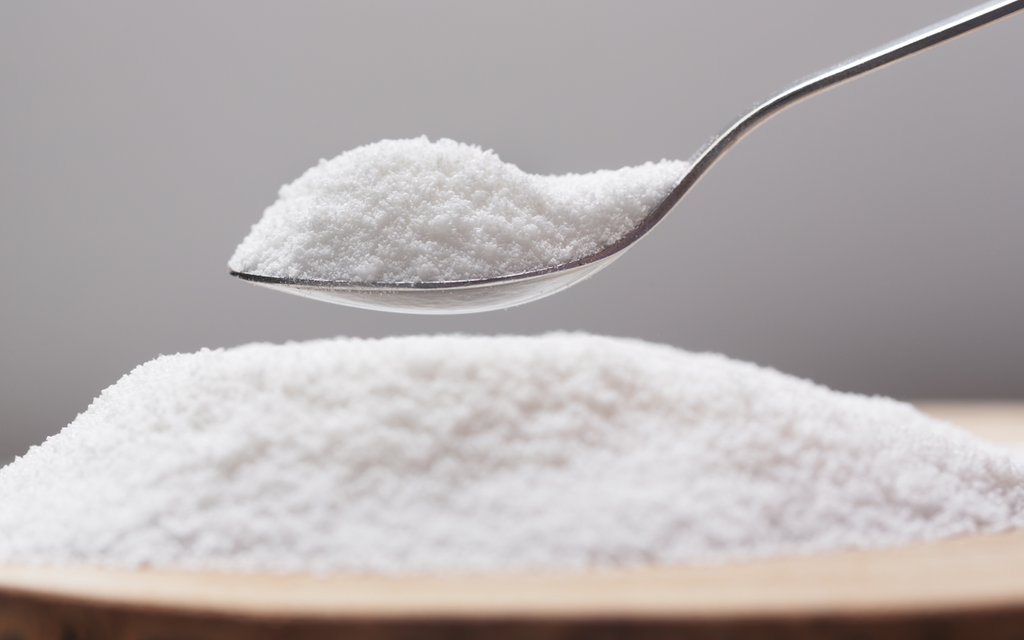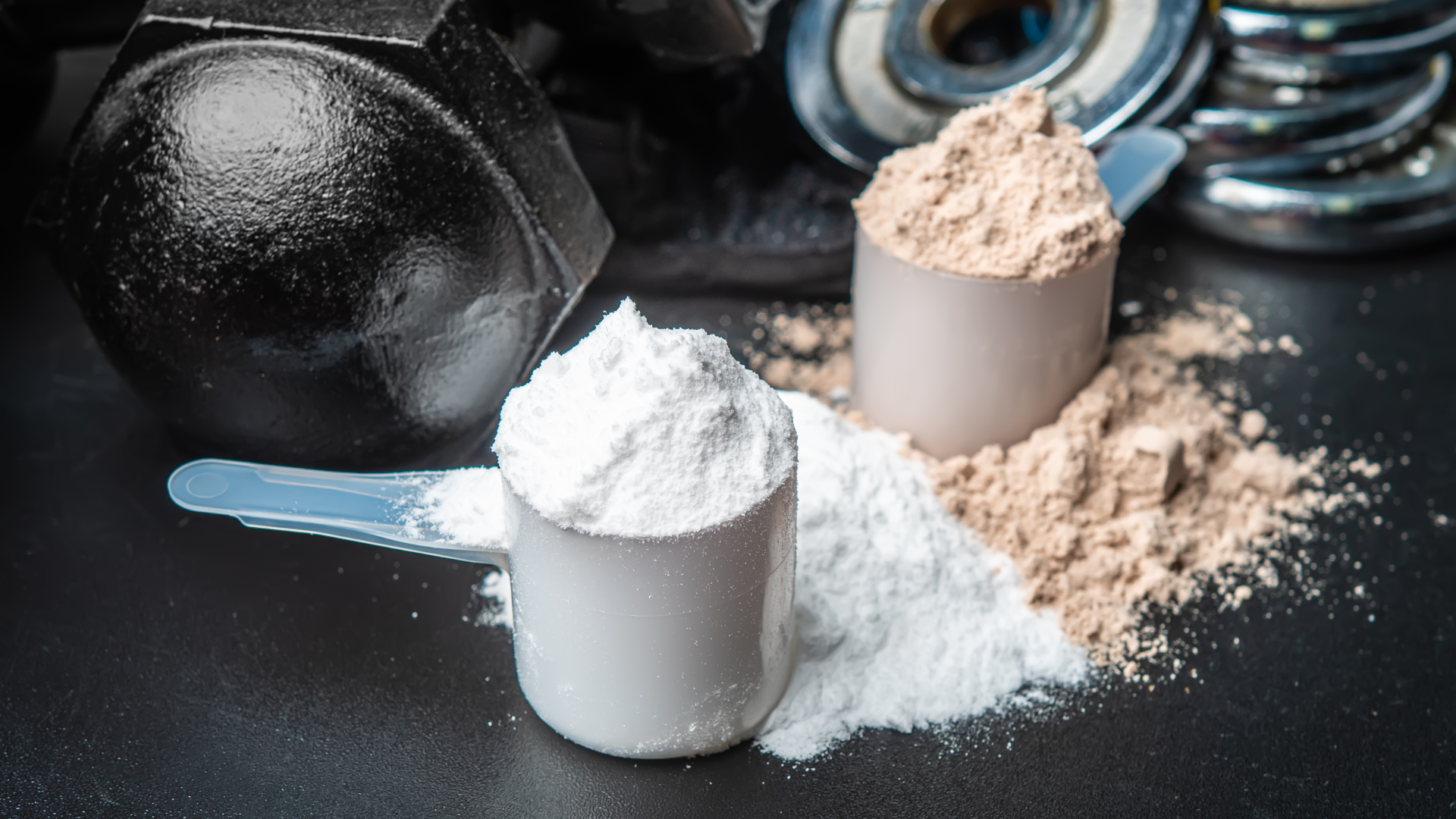Grab your cheat sheet |
Whey protein powder has become one of the most celebrated dietary supplements out there for gym-goers who want to meet—and exceed their fitness goals.
With its high protein content and impressive health benefits, whey protein powder has become a staple for athletes, fitness enthusiasts, and those seeking to smash their fitness goals.
But, the market is flooded with whey protein powder options and not all of them are created equal.
Selecting the wrong one can lead to undesirable results or even potential health risks. Scary, right?
Here, we’re going to break down just what you need to look at when selecting the right whey protein powder to make sure all your fitness needs and goals are met.
By the end, you’ll know exactly which product is best for you and be super confident that you have a formula fit for a gym king or queen.
Protein source
Each form of protein, whether whey concentrate, isolate, or hydrolysate has its own impact on digestion and absorption. This can affect how quickly and efficiently the protein is utilised by the body.
Did you know?
Let’s discuss what digestion rates and absorption means for you.
Fast absorption
Whey protein is known for its fast absorption rate, which means it gets quickly broken down and absorbed into the bloodstream giving the body what it needs when it needs it.
Energy levels
The quick absorption and utilisation of whey protein can bring a boost of energy due to a quick increase of amino acid levels.
The result is a rapid spike in protein synthesis and a rush of energy delivered straight to your workout.
Recovery
The fast digestion rate of whey protein is beneficial for post-workout recovery.
After exercise, consuming fast-digesting proteins like whey can help kick-start muscle repair and replenish glycogen stores faster which then leads to less soreness, better recovery and some great muscle growth.
Now, let’s take a quick look at the types of protein and discuss their absorption rates and digestion.
Whey protein concentrate (WPC)
WPC is the most common form of whey protein. It is produced by removing water, lactose, and some minerals from whey, resulting in a powder that contains around 70 to80% protein by weight.
WPC also retains some amounts of fat and carbohydrates in the form of lactose. This can result in a slower digestion and absorption rate compared to the other forms.
But, this slower release of proteins can also provide a sustained release of amino acids into the bloodstream, which may be beneficial for individuals seeking a longer-lasting source of protein throughout the day.
It’s usually the cheapest option among whey protein powders.
Whey protein isolate (WPI)
WPI is a more refined form of whey protein compared to WPC. It undergoes even more processing steps to remove more lactose, fat, and carbohydrates.
This form is known for its fast digestion and absorption, which can lead to a rapid release of amino acids into the bloodstream. WPI is a good choice for people looking for a quick supply of protein after workouts or for those who are lactose intolerant.
Whey protein hydrolysate (WPH)
WPH is made by processing WPC or WPI more using special enzymes. These enzymes break down the protein into smaller pieces called peptides.
This form of whey protein is generally considered easily digestible and absorbed by the body. This pre-digestion process allows for even faster absorption and availability of amino acids to the muscles.
WPH is often preferred by athletes or individuals with high-intensity training who require rapid protein absorption for muscle recovery and growth.
The summary
- Whey concentrate suits those looking for a more sustained protein release
- Whey isolate is ideal for post-workout recovery and lactose-intolerant people
- Whey hydrolysate, with its rapid absorption, can be effective for those with high-intensity training goals or specific nutrition requirements
Nutritional profile

One of the key factors when selecting the best kickass whey protein powder is taking a good look at its nutritional profile.
Here are some useful things to consider.
How much protein?
The protein content of whey protein powder is the primary reason why people choose it as a supplement.
Look for products with a high percentage of protein per serving.
Studies have shown that high-protein diets can promote muscle protein synthesis and support muscle recovery and growth.
So, the higher the protein content, the better it will be for your goals be it gains, lean muscle mass, recovery et al.
The average whey protein content in whey protein powders can vary depending on the type of whey protein and the brand.
Whey protein concentrate (WPC) typically contains 75-89% protein by weight.
Whey protein isolate (WPI) is more concentrated, with protein content usually exceeding 90%.
TIP: Go for a product that has at least 20 grams of protein per serving.
Carbohydrate and fat levels
Don’t be caught out here.
Pay attention to the carbohydrate and fat levels in whey protein powder, especially if you have specific dietary goals such as low-carb or low-fat.
It’s common for products to contain added sugars or fats, which can obviously be counterproductive for your weight loss, diet and/or fitness goals.
In general, whey protein powders are pretty low in fat, with most products containing less than two grams of fat per serving. Some whey protein powders may even be fat-free.
Taking ownership and reading the label is key here so you can get the full low down on the exact fat levels.
Similarly, whey protein powders usually contain minimal carbohydrates.
The range is typically around 1-5 grams per serving. The addition of fillers or sweeteners can bump up the carb profile however, so a thorough check of the label is really important for any product you consider.
Other nutrients
Whey protein powder is usually a really good source of essential amino acids and has a high vitamin and mineral content.
Make sure the product you choose has a well-rounded nutritional profile because, like anything you’re consuming frequently, it needs to be packed full of the good stuff.
Quality and purity

We like to stress the importance of high-quality whey protein powder.
Why?
Because the better the quality the less additives, fillers and contaminants go into your body and more of the good stuff goes to work.
Third-Party Testing and Certifications
Here at Crazy Nutrition we emphasise how any product you use on your fitness journey should have been subject to third-party testing and certifications to ensure they’re fit for purpose.
These independent organisations test products for quality, potency and also purity.
Third-party testing identifies unwanted contaminants and impurities. This makes sure the product is safe and does not pose any risks to consumer health.
When it’s put in those terms, buying an untested product seems risky, doesn’t it?
Allergies and intolerances
Third-party testing can also identify ingredients that are not listed on the label, which could be harmful to people with allergies or intolerances.
By verifying the absence of such substances, the product becomes safer for consumers with specific dietary needs.
No one wants to consume any nasties, particularly when they have intolerances to contend with.
Confidence in product quality
The presence of third-party testing and certifications provides people with added assurance that the product is worth all the official processes.
The certifications, such as NSF International or Informed Choice, indicate that the product has undergone rigorous testing and is free from unwanted contaminants and impurities.
Bear in mind these kinds of official certifications and higher-quality ingredients will cost more, but can you really put a price on health?
Flavour and texture
Flavour and texture play a significant role in whey protein powder you select.
Why?
Because these things can greatly impact the overall taste and enjoyment of the product. A nice flavour and satisfying texture make it more likely for you to incorporate protein powder into your regular diet and fitness routine.
Many studies have shown that flavor is a critical factor influencing consumers' acceptance and preference as well as the primary factor influencing the purchase of whey protein powders.
While the functional and nutritional properties of whey protein are important, flavour remains a key driver in the sales of whey protein ingredients.
Makes sense, doesn’t it?
So what flavour options are available?
The flavours are almost always sweet.
Some popular flavours include vanilla, chocolate, strawberry, cookies and cream, and mocha, among others.
Let’s mention texture, too as it’s another important aspect to consider when selecting a whey protein powder.
Some individuals prefer a smooth and creamy texture, while others may enjoy a slightly thicker or more textured consistency.
Different brands naturally offer different textures like creamy, smooth, thick, or even crunchy (in the case of protein powders with added mix-ins like chocolate chips or cookie crumbs).
When you think about it, colour too is an important factor. Shakes tend to be in muted tones like pale pink, beige and rich browns. We eat with our eyes after all.
Chances are, no one is going to grab a black or bright red shake.
Additives and allergens
Watch out for the nasties that might be in the whey protein powder. They come in the form of additives, filler, artificial sweeteners, flavours, colours and allergens.
Let’s look at each of them below in more detail.
Additives and fillers
These additives are often used to enhance flavour, improve mixability, extend shelf life, or modify texture.
While some additives may be safe and have minimal impact on health, it is really important to be aware of potential negative effects or ingredients that don’t sit well with your dietary preferences.
Artificial sweeteners

These sweeteners, such as sucralose or aspartame, are added to protein powders to provide sweetness without adding extra calories.
The problem with them is that some people might have digestive issues or adverse reactions to them.
Choose powders with natural sweeteners in them instead. Monk fruit extract and stevia are good options.
Artificial flavours and colours
Another additive to watch out for is artificial flavours or colours.
They’re used to enhance the taste or appearance of whey protein powders but they can create adverse reactions in some people with sensitivities or allergies.
In general it’s better to steer clear of them.
Allergens
As you probably know, whey protein is derived from milk, which contains lactose and casein.
Those with lactose intolerance or dairy allergies should look for whey protein powders labelled as lactose-free or suitable for those with dairy allergies.
IMPORTANT
Some protein powders may be processed in facilities that handle allergens like soy, nuts, or gluten so beware!
Price and value
This is one that people consider a lot and rightfully so.
Let’s look at the ways this might influence which whey protein powder you buy.
Budgeting and considering price per serving
Budgeting and considering the price per serving is one of the biggest influences for consumers.
Of course, we don’t want to pay more than we are comfortable with, but then again, how much are we willing to pay for the results we want?
By calculating the cost per serving, you can compare different brands and sizes more accurately.
Let's say you have a container of whey protein powder that costs $40 and contains 30 servings.
To calculate the cost per serving, divide the total cost of the container by the number of servings…
Cost per serving = Total cost / Number of servings
Cost per serving = $40 / 30 servings
Cost per serving = $1.33
It’s also important to note that the lowest price per serving doesn’t guarantee the best value.
User reviews and reputation

This is another key thing to look for when selecting your whey protein powder.
Positive user reviews and a strong brand reputation can indicate that a whey protein powder frequently meets consumers' expectations. It also suggests it gets results.
User feedback on taste and effectiveness can help align with your own preferences and goals and is a useful way to gain “insider knowledge” about the product before purchasing.
Brands that have a good reputation for producing high-quality products are more likely to prioritise customer satisfaction and are often worth considering.
Crazy Nutrition whey protein powder
If you’re looking for a simple, delicious and premium powder crafted for athletes and gym-goers then look no further than Crazy Nutrition’s TRI-PROTEIN formula.
Whatever your goals, you can recover, build and repair muscle faster than ever with its high-quality ingredients, including four natural, non-GMO proteins that break down in three phases for more energy and strength than hemp, soy, or whey formulas.
It comes in the choice of strawberry, vanilla, chocolate or banana flavour.
Used by bikini champions, strength coaches, athletes and gym-goers alike, it’s a rigorously tested, scientifically backed and amazingly tasty option to get the results you want, faster. Go get some.



